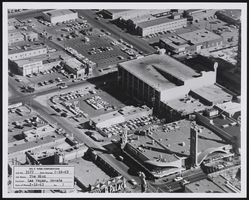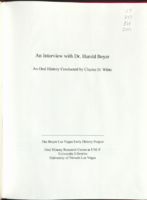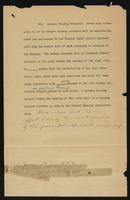Search the Special Collections and Archives Portal
Search Results

Transcript of interview with Ed Walters by David G. Schwartz, April 20, 2015
Date
Archival Collection
Description
Text

Transcript of interview with Bill Zender by David Schwartz, May 27, 2015
Date
Archival Collection
Description
Text

Transcript of interview with Jimmy Wike by David Schwartz, June 02, 2015
Date
Archival Collection
Description
Text

Mint Hotel, image 009: photographic print
Date
Archival Collection
Description
Image

Transcript of interview with Steve and Linda Casey by Claytee D. White, June 04, 2014
Date
Archival Collection
Description
Text

Christine Szukala oral history interview: transcript
Date
Archival Collection
Description
Oral history interview with Christine Szukala conducted by Bridgette Foote on November 12, 2021 for Reflections: The Las Vegas Asian American and Pacific Islander Oral History Project. Christine shares her family history and the story of her Thai mother and American Air Force father who met in Thailand and married before moving to the United States in 1970. She talks about her upbringing in Las Vegas, Nevada near Nellis Air Force base with her six siblings. Christine discusses her beliefs of how her newly immigrated mother adapted to American life, including altering her recipes to fit her husband's taste and reducing her visits to nearby Buddhist temples.
Text
orthographic projections (images)
drawings, prints, or other media in which the projectors are perpendicular to the plane of projection (drawing surface), that is, a three-dimensional object is shown fully frontally at all points, with no indication of recession into depth
Authority Sources
Material Type

Letter from R. L. Adamson (Los Angeles) to F. H. Knickerbocker, August 18, 1931
Date
Archival Collection
Description
Letter refers to Las Vegas Land and Water Company map, referenced below, showing proposed earthen dam near the Old Mormon Fort. Letter includes estimated construction costs. Mr. Adamson, Chief Engineer of the Union Pacific Railroad, advised against the spending of company money on the project.
Text

Transcript of interview with Dr. Harold Boyer by Claytee D. White, November 15, 2000
Date
Archival Collection
Description
Text

